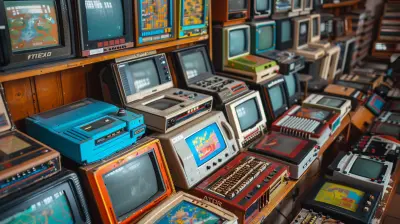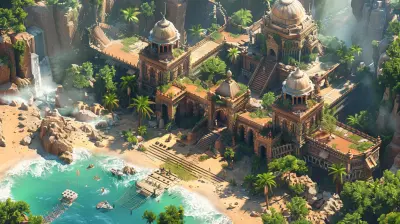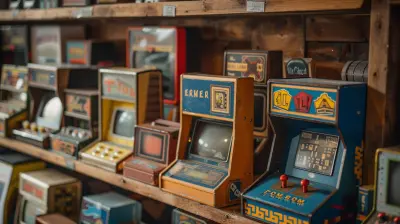Before the Blockbusters: The Unknown Indie Games That Made History
28 June 2025
When you think about the titans of the gaming industry—titles like The Legend of Zelda, Call of Duty, or Grand Theft Auto—you probably imagine entire floors of developers, multimillion-dollar budgets, and marketing machines the size of small countries. But hey, here’s a thought: what if some of the most groundbreaking games in history didn’t come from mega-corporations? What if the pivotal ideas that shaped modern gaming were born in someone’s bedroom, coded late at night, fueled by ramen noodles and raw ambition?
Welcome to the world of indie games—the underdogs, the guerrilla creators, the rebels of the digital world. Today, we’re diving deep into the forgotten legends. These are the games that paved paths long before the big-budget blockbusters stole the spotlight. These indie gems may not have the household name recognition, but they’ve left undeniable fingerprints on the gaming universe.
So grab your retro controller, and let’s take a nostalgic trip into pixel paradise.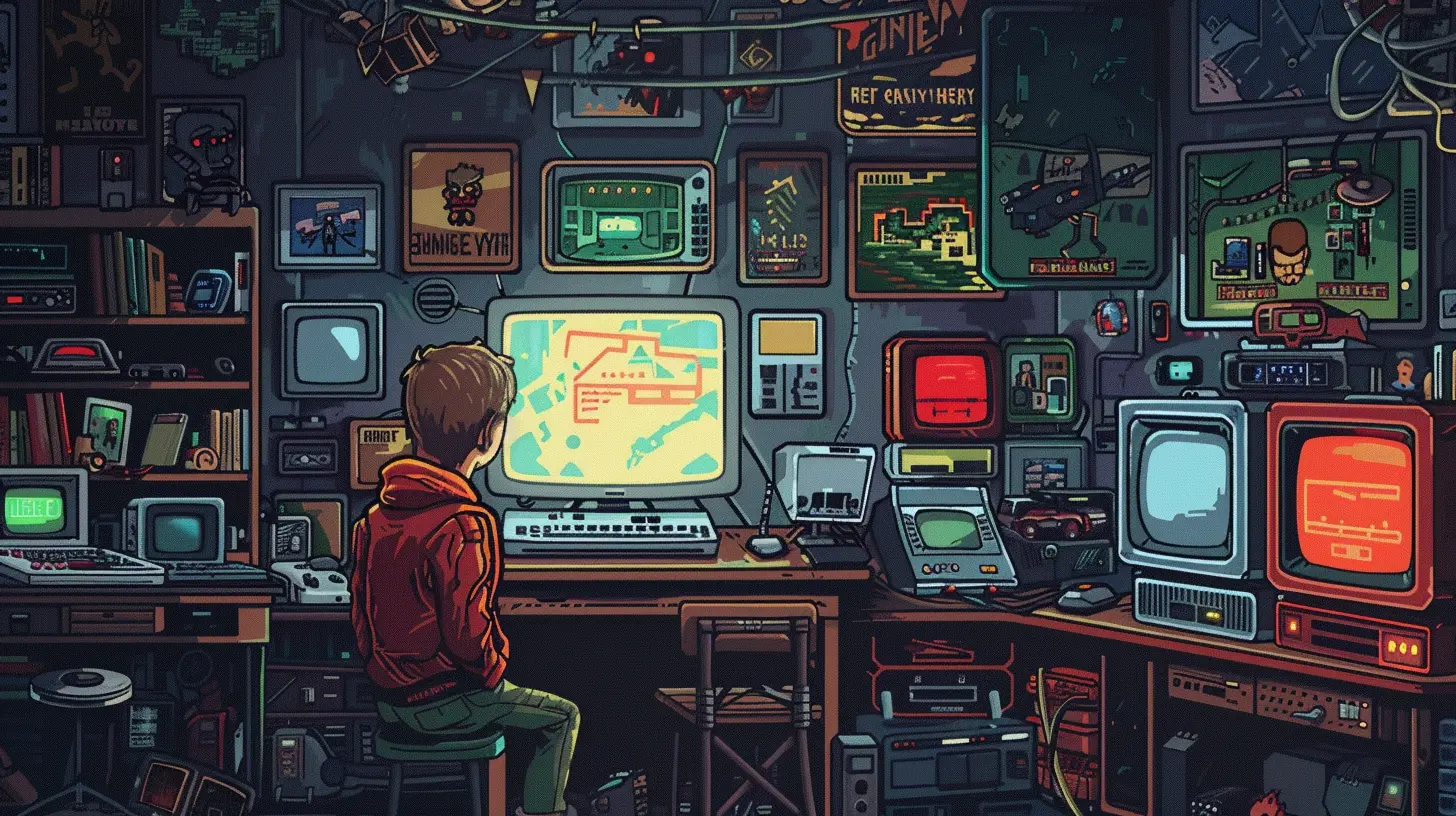
What Really Counts as an Indie Game?
Before we jump into time machines and pixelated memories, let’s get one thing straight: what makes a game “indie”? The term “indie” stands for “independent,” which means the developer wasn’t backed by a huge publisher (think EA or Ubisoft). But being indie isn’t just about budget—it’s about spirit. It’s about breaking rules, experimenting with ideas, and flipping the script on traditional gameplay.Indie developers often take bigger creative risks. Sometimes they fail spectacularly. But sometimes? They make history.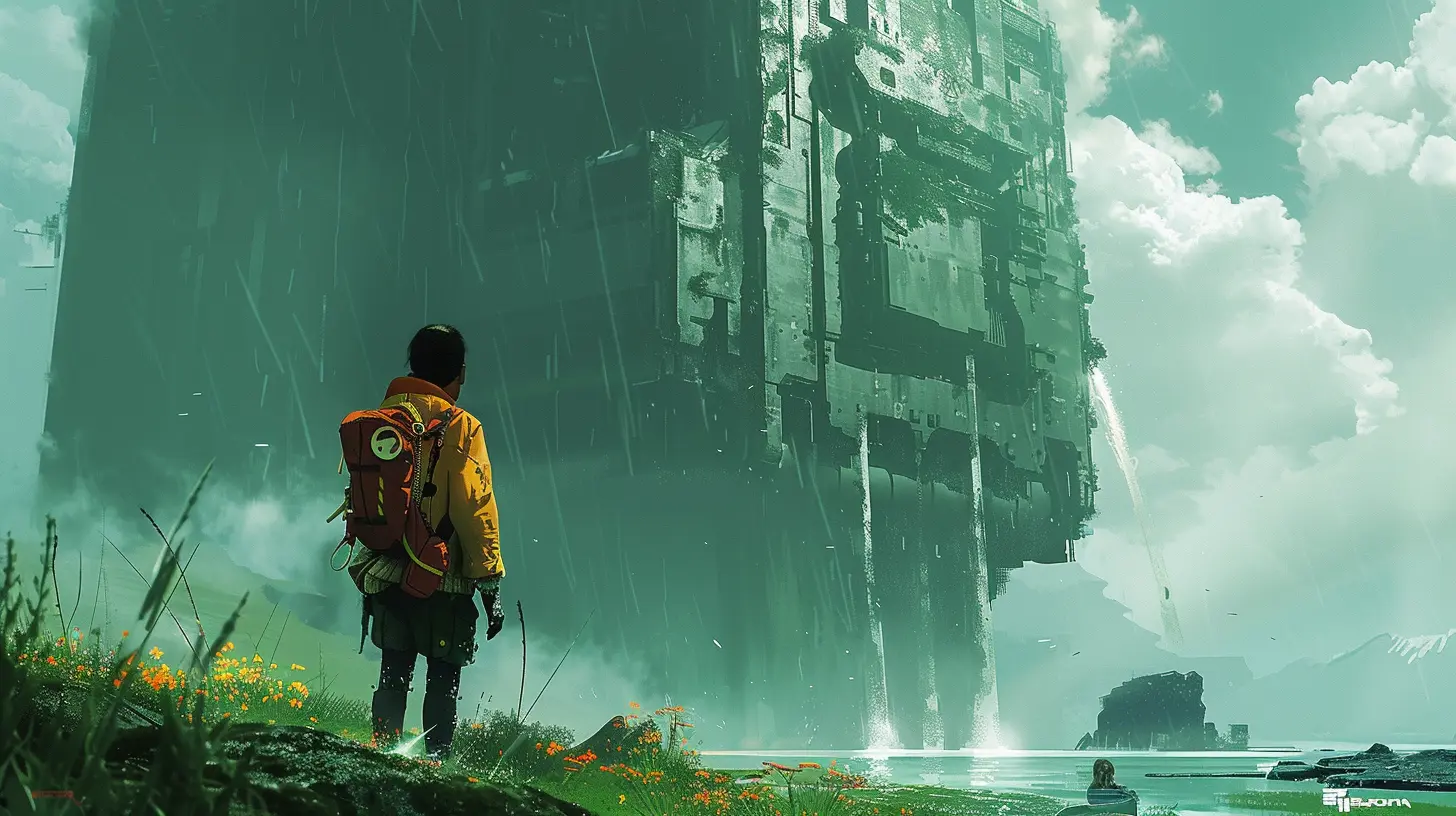
The Early Indie Revolution: Breaking the Mold
Believe it or not, the indie scene didn’t start with Stardew Valley or Undertale. Nope—indie innovation has been brewing since the early days of gaming. We're talking floppy disks, dial-up internet, and garage-based game development.Let’s rewind to some of the indie pioneers that rattled the cage before anyone even knew the cage existed.
1. Dwarf Fortress (2006) – The Godfather of Procedural Worlds
Ever played a game where every stone, tree, and character has a backstory so complex it could rival Game of Thrones? Welcome to Dwarf Fortress, the mother of madness. Created by Tarn and Zach Adams, this game was more about simulation than spectacle.The graphics? ASCII art—just letters and symbols. The gameplay? Brutally punishing. The influence? Massive.
You’ve probably never played Dwarf Fortress, but you’ve definitely played a game inspired by it. Titles like Minecraft owe a huge debt to the procedural generation and sandbox design pioneered here.
> "Losing is fun." – The unofficial motto of Dwarf Fortress
2. Cave Story (2004) – The Solo Success That Shook the Scene
Picture this: one guy, one computer, and five years of pure dedication. That’s how Cave Story came to life, thanks to Daisuke Amaya—also known as Pixel. This Metroidvania-style platformer was a love letter to the classics, with tight controls, charming pixel art, and an emotionally gripping story.What made it so revolutionary? It proved that one person could make a game that resonated with millions. This was the indie dream, come to life.
> It didn’t just inspire developers—it gave them hope.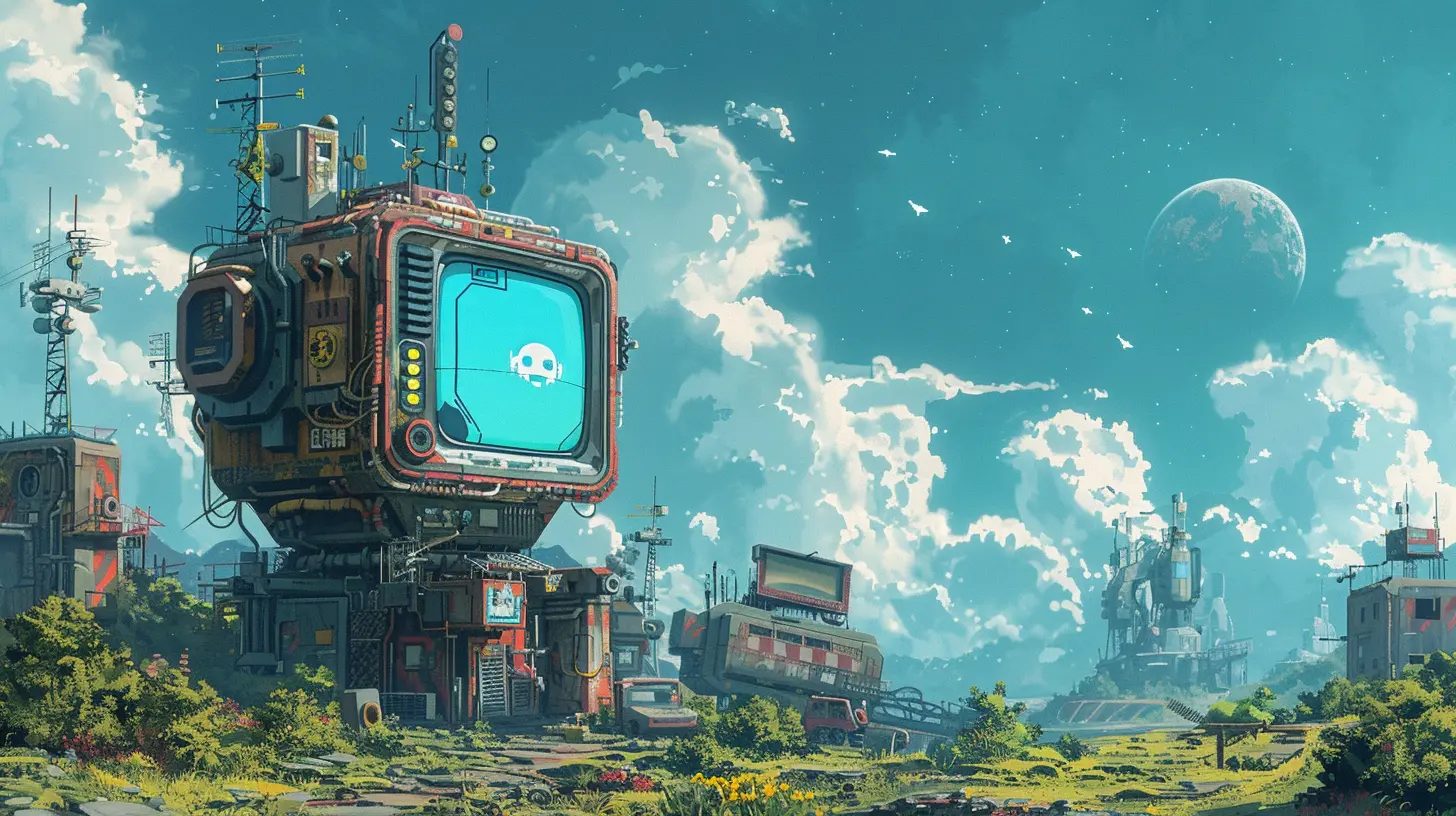
Before the Gold Rush: How Indies Shaped the Market
Today, platforms like Steam, itch.io, and even mobile stores are flooded with indie games. But back in the day? If you weren’t published by a major player, you barely existed.These early indie trailblazers didn’t just have to make great games. They had to fight to be seen. And in doing so, they shaped the very platforms that now champion indie releases.
3. Braid (2008) – Time Travel for the Soul
You might know Braid—but do you remember how radical it was when it first hit Xbox Live Arcade?Jonathan Blow crafted a puzzle-platformer that wasn’t just smart—it was poetic. Braid played with time manipulation in ways no one had seen before. But more importantly, it made players think. Like, really think.
This wasn’t just a game; it was a piece of art. And guess what? It opened the floodgates for games to be seen as more than just entertainment.
4. World of Goo (2008) – Sticky Balls of Genius
Two-man team 2D Boy created a quirky physics-based puzzle game that turned heads and won hearts. With its adorable aesthetic and clever design, World of Goo proved that indie games could be commercially successful and critically acclaimed.It wasn’t just about physics—it was about sticking together (quite literally). And it stuck with players, too.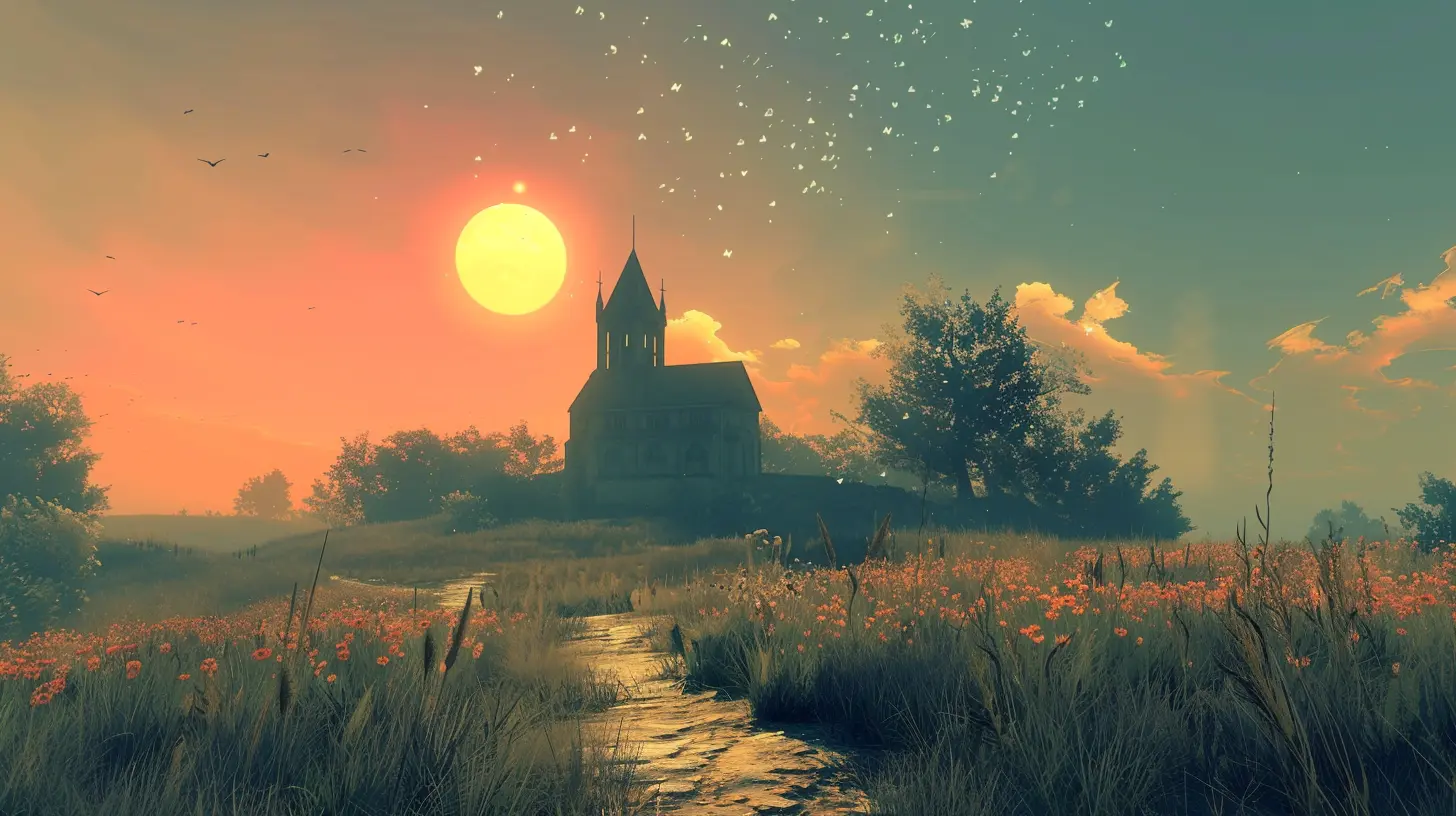
The Indie Spark That Lit a Wildfire
Here's the wild part: many of these earlier indie games weren’t financially massive. They weren’t topping sales charts or winning Game of the Year. But oh boy, were they influential.They inspired a new generation of developers—people who didn’t need a whole studio, just a laptop, a dream, and a ridiculous amount of coffee.
Let’s look at a few more obscure gems that never hit the mainstream radar but quietly shaped the DNA of modern games.
5. Knytt Stories (2007) – Minimalism with Maximum Impact
Developed by Nicklas Nygren (a.k.a. Nifflas), Knytt Stories was minimalism perfected. A serene world, ambient music, and exploration-focused gameplay made it quietly revolutionary.Its peaceful, meditative tone inspired titles like Journey and Ori and the Blind Forest. Sometimes, less really is more.
6. Soldat (2002) – Run, Gun, Jetpack, Repeat
Before battle royales took over your screen, there was a chaotic 2D shooter called Soldat. Created by Michal Marcinkowski, this game mashed up Worms-style physics with fast-paced action.It had jetpacks. It had ragdoll physics. It had pure, addictive chaos. And it laid the groundwork for later multiplayer indies like Broforce and Duck Game.
7. Mount & Blade (2005) – Strategy, Swordplay, and Sandbox Glory
Most strategy games at the time were rigid. Mount & Blade, from Turkish developer TaleWorlds, said “Nah, let’s do things differently.”Here you could command armies, fight in first-person combat, run towns, build economies—all in one sprawling, sandbox world. It was clunky, sure. But it was groundbreaking. And when its spiritual successor Bannerlord dropped years later? Fans were still cheering.
Why These Games Still Matter
You might be wondering—so what? These games came and went. Isn’t that ancient history?Not even close.
The DNA of these titles flows through today’s biggest hits. Think about it:
- Minecraft? Procedural sandbox, thanks to Dwarf Fortress.
- Celeste? Tight platforming and personal storytelling, just like Cave Story.
- Hollow Knight? Metroidvania roots with the polish of Braid.
Every indie heavyweight you see today—Hades, Undertale, Stardew Valley—stands on the shoulders of these unsung pioneers.
The Indie Legacy: More Than Just Games
Let’s not forget—indie games didn’t just change what we play. They changed how we make and experience games.They democratized development tools, encouraged diversity of voices, and birthed entire communities around shared love for creativity and innovation. The phrase “indie spirit” isn’t marketing fluff—it’s the heart of gaming’s most passionate movement.
The Takeaway: Don’t Sleep on the Unknowns
Here’s the deal—when we only focus on the big names, we miss the quiet titans. Those pixelated rebels. The code warriors who dared to be different.The next time you're scrolling through a storefront, and you spot a weird little game with no marketing, no buzz, and a simple screenshot? Don’t scroll past it. That just might be the next Cave Story, waiting to make history again.
Because before there were blockbusters, there were dreamers. And they were indie as hell.
Final Thoughts
The world of indie games is like an endless cave—just when you think you’ve explored it all, you find a gem glowing in the corner. Some of the most iconic mechanics, genres, and emotional moments in gaming started not in boardrooms, but in basements.So let’s raise a pixelated toast to the unknowns, the misfits, the rebels of the code. The games that made history long before history knew their names.
all images in this post were generated using AI tools
Category:
Gaming HistoryAuthor:

Brianna Reyes
Discussion
rate this article
2 comments
Zinn Harris
Indie games often weave profound narratives and innovative mechanics, challenging conventions and revealing the artistry behind gaming. Their legacy reshapes the industry, illuminating paths for future creators.
October 29, 2025 at 5:28 AM

Brianna Reyes
Thank you! Indie games truly push boundaries and inspire future innovation in the industry. Their unique narratives and mechanics are essential to gaming's evolution.
Misty McCool
What a delightful dive into the hidden gems of gaming! It’s amazing how these indie titles laid the groundwork for the blockbusters we love today. They remind us that creativity often thrives in the most unexpected places. Can't wait to explore!
July 13, 2025 at 2:36 AM

Brianna Reyes
Thank you! I'm glad you enjoyed the exploration of indie games and their impact on the industry. Happy gaming!
